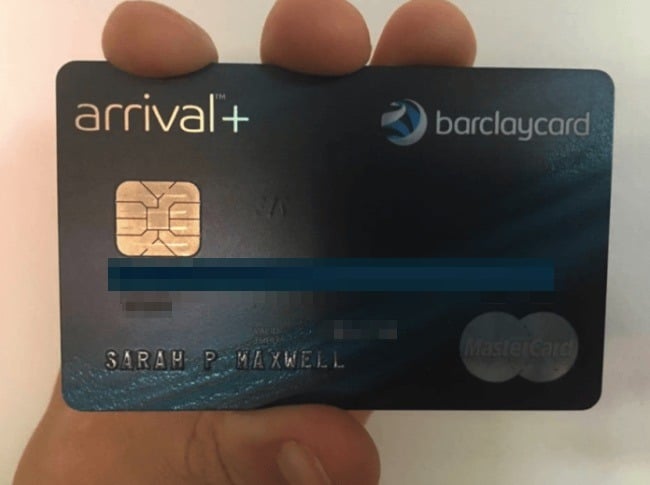MileValue is part of an affiliate sales network and receives compensation for sending traffic to partner sites, such as CreditCards.com. This compensation may impact how and where links appear on this site. This site does not include all financial companies or all available financial offers. Terms apply to American Express benefits and offers. Enrollment may be required for select American Express benefits and offers. Visit americanexpress.com to learn more.
Note: Some of the offers mentioned below may have changed or are no longer be available. You can view current offers here.
I opened a Barclaycard Arrival Plus Card a little over a year ago, which meant that I was recently faced with the decision everyone should consider a year into holding a card that charges an annual fee: Is is worth keeping another year?
Leaving annual fee cards open year on end without considering if they’re worth it is a mistake that will suck all the value out of your rewards fast. Don’t let that happen to you. It’s exciting when you open a new card, meet the minimum spending requirement, and then get that big hunk of miles or points. Super exciting. But even if you don’t continue to spend on a credit card past meeting the minimum spend, you can’t just forget about it. Record all your cards, when you opened them, when you earned the bonus, and any other pertinent notes in a spreadsheet or using a tool like Award Wallet, that way you’ll know when it’s time to consider what to do with that card before the annual fee is charged again. Then record what you decided to do with it, so you’ll be aware of any timelines to abide when it comes to opening new cards.
Calling For a Retention Bonus
The first step in performing a cost/benefit analysis is to find out if you will receive a retention bonus for keeping the card that is worth more than the annual fee. If so, you can keep the card and the analysis is over.
So I called the number on the back of my Arrival Plus.

I explained to the representative that I just wasn’t sure I was getting enough value from my Arrival Plus to merit keeping it open another year, and then asked if there was any incentive they could offer that would make keeping the card open worth it. Not surprisingly they answered no. Don’t give up if this happens to you, it is a typical response. I asked to be transferred to a specialist or manager who might be able to further assist me, and was immediately without question transferred to someone else.
The second rep I spoke with told me that they were sorry, they were not allowed to waive the annual fee after the first year (the first year’s annual fee was waived as part of the sign up package). I asked if there were any other options. She then recommended downgrading to the no annual fee Arrival Card, which earns 2 Arrival miles per dollar on travel/dining, and 1 Arrival mile per dollar on everything else. If I downgraded and then put at least one purchase on the card, I’d get 1,000 bonus miles after that purchase.
I asked if there were any other offers available and was shot down. That’s not surprising as I put little spend on the card past meeting the minimum spending requirement for the initial sign-up bonus.
Debating the Offer
I knew the Arrival Card would be offered as a no annual fee downgrade option, which on one hand is appealing simply for the ability to keep the account open which lengthens the average age of your accounts and improves your credit score. The counter argument is that you aren’t eligible for another Arrival Plus bonus unless your old one is closed (for a recommended six months). So if you plan to churn the card, downgrading is not an option. My sight isn’t set on opening another Arrival Plus in the near future, and I have roughly 3,400 orphaned Arrival miles that I can’t currently do anything with. With the prospect of being to do something with those miles, and with no plan to open another Arrival Plus in the next six-ish months, I decided to take the downgrade offer.
If I hadn’t received any sort of retention offer, the next step of the cost/benefit analysis process would be to figure out if the marginal benefits of holding the card are greater than the annual fee.
Using The Orphaned Points
The Arrival Plus and Arrival Card have different redemption schemes. The Arrival Plus requires redemptions of at least 10,000 miles to get the highest return of 1 cent each (in the form of travel statement credits, so 10,000 miles = $100 in travel expenses). But the Arrival Card allows you to redeem as little as 2,500 miles towards travel expenses at 1 cent each. I clarified with the rep that the Arrival miles I’d earn from the Arrival Card are the same type of Arrival miles earned by the Arrival Plus, and that my leftover balance of 3,400 from the Arrival Plus would be migrated to the Arrival Card account.
With the 1,000 mile bonus my balance will jump to 4,400, which should get me $44 in travel statement credit redeemed from new Arrival Card account.
How to Boost Your Arrival Miles Balance to a Redeemable Amount
If you find yourself with orphaned Arrival miles, another option to boost your balance is by writing Travel Stories for the Barclaycard Travel Community. That will earn at least 150 miles per story + one photo.

The Barclaycard Arrival Plus Offer and Who it’s Good For
Opening and spending $5,000 on the Arrival Plus within three months will earn you 60,000 Bonus Arrival miles. The Arrival Plus card’s sign up bonus, along with the Arrival miles earned from the spend it takes to unlock the 60k Arrival “miles” bonus, is worth $700 in free travel. It earns 2 Arrival miles per dollar spent, representing a 2% return as each Arrival mile is worth 1 cent each. Technically the return is a tiny bit higher than that, with a 5% rebate of miles each time you redeem. The annual fee of $89 is waived the first year.
The Arrival Plus is good for…
- Domestic economy flyers: Arrival miles are useful for covering cheap cash flights that typically aren’t worth spending airline miles on. I wouldn’t necessarily recommend the Arrival Plus to put all your spending on, but it’s at least good for the sign-up bonus and first year with no annual fee. Read more about the best combo of credit cards for this kind of traveler in Rewards Earning Strategy for Domestic Economy Travelers.

- Points Omnivores: Arrival miles can be used to cover any travel expense, from Airbnbs to award taxes and fees. Those that are just looking to get as much free travel as possible (i.e. Points Omnivores) will find the bonus on the Arrival Plus useful.
Bottom Line
After a year of holding a Barclaycard Arrival Plus, it was time to weigh my options with the prospect of an $89 annual fee hitting. When I called the number on the back of my card, I was eventually connected to someone who offered me a downgrade offer: 1,000 bonus miles for downgrading my Arrival Plus to an Arrival Card and putting one purchase on it instead of closing my Arrival Plus. I chose to take the offer as I have some orphaned Arrival miles that I’ll be able to redeem in the form of travel statement credits from the Arrival account since that card only requires a balance of 2,500 (while the Arrival Plus requires a balance of 10,000). After I get rid of the orphaned miles, I’ll take another look at my credit card plan for the near future to see if opening another Barclaycard Arrival Plus is in the cards, as I won’t be eligible for the bonus until (safely) 6 months after closing the Arrival Card.
Do you currently or have you ever held an Arrival Plus?
Just getting started in the world of points and miles? The Chase Sapphire Preferred is the best card for you to start with.
With a bonus of 60,000 points after $4,000 spend in the first 3 months, 5x points on travel booked through the Chase Travel Portal and 3x points on restaurants, streaming services, and online groceries (excluding Target, Walmart, and wholesale clubs), this card truly cannot be beat for getting started!
Editorial Disclaimer: The editorial content is not provided or commissioned by the credit card issuers. Opinions expressed here are the author’s alone, not those of the credit card issuers, and have not been reviewed, approved or otherwise endorsed by the credit card issuers.
The comments section below is not provided or commissioned by the bank advertiser. Responses have not been reviewed, approved, or otherwise endorsed by the bank advertiser. It is not the bank advertiser’s responsibility to ensure all questions are answered.



That was my first card in the miles game. I think back then it might have had a 100k sign up bonus and didn’t have the 10,000 mile rule in place.
I got maximum benefit out of it in the first year and then cut it loose. I could probably qualify for the current bonus since it has been at least 3 years since I’ve had it.
The no-fee Arrival does not have the same minimum redemption as the Arrival+. It’s 2,500 instead of 10,000.
Just checked and you’re right! Thanks for pointing that out, you just saved me some extra money! Will update the post.
It is a long term keeper for me. Right now, pretty easy for me to do the MS, WM, WF thing with this card without causing me to do much out of my normal daily errands. I slowly wipe out all, but 44%, of the cost of the hotel stay. For me, it is a part of the overall strategy of reduced cost travelling.
For someone that has to drive many miles to do the MS, then MS becomes too much trouble and a true cash back card might be better.
The card is also a keeper if you enjoy writing stories for the Barclay Travel Community. That’s not for everyone, – it takes a certain amount of time and effort – and they do crack down on people who try to game the system, but between writing stories and getting “kudos” from other community members, you can generate a steady stream of points, assuming, of course, that you actually travel enough to keep the stories coming.